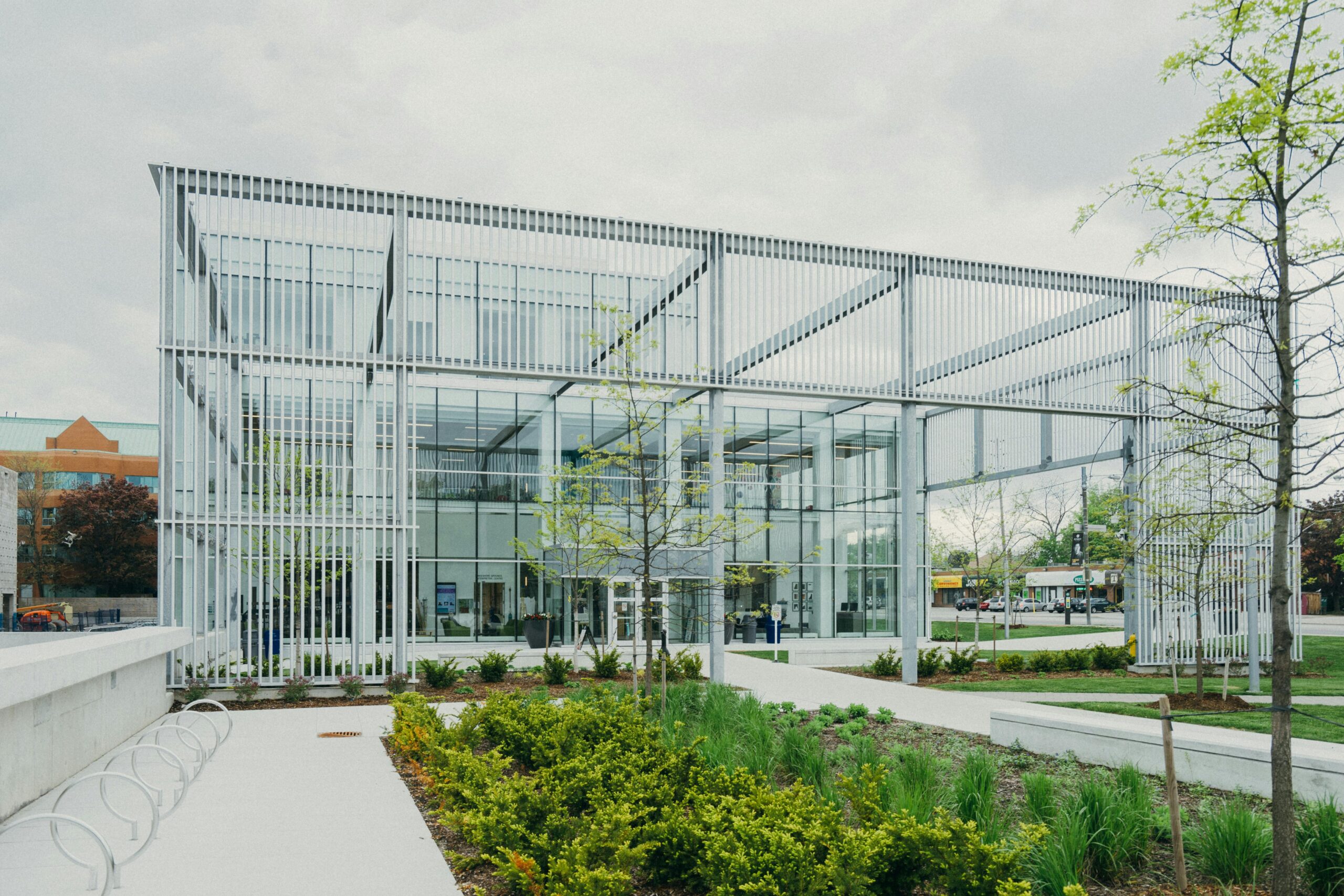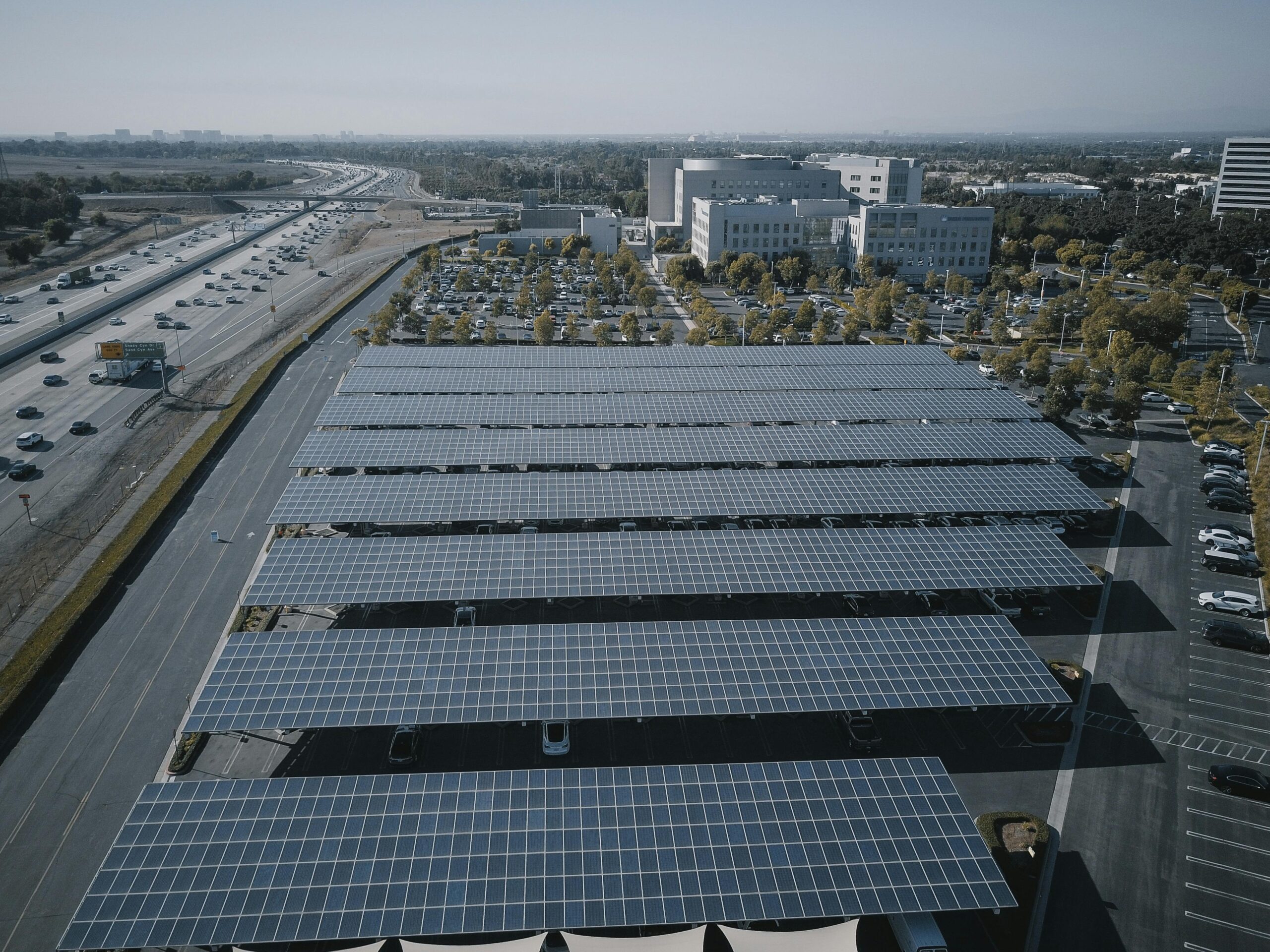Climate-responsive facades are transforming how architects approach sustainable building design, offering dynamic solutions that adapt to environmental conditions while reducing energy consumption and enhancing occupant comfort.
🌍 The Evolution of Building Envelopes in Modern Architecture
The building facade has evolved from a simple protective barrier to a sophisticated, intelligent system that interacts with its environment. Traditional architecture relied on passive strategies, but modern climate-responsive facades integrate advanced materials, sensors, and control systems to create buildings that breathe, adapt, and optimize their performance throughout the day and seasons.
This paradigm shift represents more than aesthetic innovation—it addresses the urgent need for sustainable construction practices. Buildings account for approximately 40% of global energy consumption and 36% of CO2 emissions. Climate-responsive facades offer a powerful solution to reduce this environmental footprint while creating healthier, more comfortable spaces for occupants.
The concept draws inspiration from biomimicry, emulating how living organisms regulate their internal environments in response to external conditions. Just as human skin adjusts to temperature changes through perspiration and blood flow regulation, adaptive facades employ various mechanisms to maintain optimal interior conditions with minimal energy input.
Understanding the Core Principles of Climate-Responsive Design
Climate-responsive architecture operates on fundamental principles that maximize environmental benefits while minimizing resource consumption. These principles guide architects and engineers in creating facades that work harmoniously with natural forces rather than fighting against them.
The first principle involves understanding local climate patterns, including solar radiation, prevailing winds, temperature fluctuations, and precipitation levels. This site-specific knowledge informs design decisions about orientation, shading strategies, ventilation pathways, and material selection. A facade optimized for Mediterranean climates will differ significantly from one designed for Nordic or tropical environments.
Thermal mass management represents another crucial principle. Materials with high thermal mass absorb heat during warm periods and release it when temperatures drop, naturally moderating indoor temperatures. Climate-responsive facades strategically position these materials to maximize their effectiveness, sometimes exposing them selectively based on seasonal needs.
Dynamic adaptation forms the third pillar, where facade components adjust their configuration or properties in response to changing conditions. This might involve movable shading devices, switchable glazing, adjustable ventilation openings, or phase-change materials that alter their state based on temperature thresholds.
⚡ Innovative Technologies Powering Adaptive Facades
Technological advancement has exponentially expanded the possibilities for climate-responsive design. Modern facades incorporate sophisticated systems that would have been impossible or prohibitively expensive just a decade ago.
Electrochromic glazing represents one of the most exciting developments in adaptive facade technology. These smart windows change their tint in response to electrical current, allowing occupants or automated systems to control solar heat gain and glare without compromising views. Unlike traditional blinds or shades, electrochromic glass maintains transparency while blocking up to 98% of infrared radiation.
Kinetic facades feature movable components that track the sun’s position, optimizing shade and natural light throughout the day. These systems range from simple rotating louvers to complex origami-inspired panels that fold and unfold. The Al Bahar Towers in Abu Dhabi showcase this technology with computer-controlled umbrella-like screens that open and close in response to sun intensity, reducing cooling loads by 50%.
Phase-change materials (PCMs) offer passive thermal regulation by absorbing or releasing latent heat as they transition between solid and liquid states. Integrated into facade panels or coating systems, PCMs stabilize interior temperatures without mechanical intervention, reducing heating and cooling demands significantly.
Photovoltaic integration transforms facades into energy-generating surfaces. Building-integrated photovoltaics (BIPV) serve dual purposes as weather barriers and power producers. Semi-transparent solar cells can even be incorporated into windows, generating electricity while maintaining daylight access and views.
Regional Climate Strategies: Tailoring Facades to Local Conditions
Effective climate-responsive design requires understanding regional climate characteristics and implementing strategies that address specific challenges. Different climate zones demand distinct approaches to facade design.
Hot and Arid Climates
Desert regions present extreme temperature variations and intense solar radiation. Successful facades in these environments emphasize thermal mass, night cooling strategies, and sophisticated shading systems. Deep overhangs, perforated screens, and reflective surfaces minimize heat gain during scorching days while thick walls store coolness for nighttime release.
Traditional Middle Eastern architecture provides valuable lessons with mashrabiya screens—ornate wooden lattices that filter harsh sunlight while promoting ventilation. Contemporary interpretations of these time-tested elements combine cultural heritage with modern materials and computational design, creating facades that honor tradition while achieving superior performance.
Humid Tropical Environments
Tropical climates require facades that maximize natural ventilation, provide continuous shading, and resist moisture-related deterioration. Large overhangs protect against heavy rainfall while allowing breezes to flow through interior spaces. Elevated buildings with permeable ground floors facilitate air circulation and reduce humidity buildup.
Materials selection becomes critical in humid environments where mold, rot, and corrosion threaten building longevity. Climate-responsive facades in tropical regions often feature durable, low-maintenance materials like treated timber, aluminum, and glazed ceramics that withstand constant moisture exposure.
Temperate and Cold Climates
Northern latitudes face different challenges, prioritizing heat retention during long winters while preventing overheating during brief summers. Double-skin facades create thermal buffer zones that insulate in winter and ventilate in summer. South-facing glazing maximizes solar heat gain during cold months, while strategic shading prevents excessive summer warmth.
Thermal bridges require careful attention in cold climates, as heat escapes through poorly insulated facade connections. Advanced insulation materials, including aerogels and vacuum panels, achieve superior thermal performance with minimal thickness, maintaining aesthetic elegance while preventing energy loss.
🏗️ Material Innovation: Building Blocks of Responsive Facades
Material science breakthroughs have expanded the palette available to designers creating climate-responsive facades. These advanced materials exhibit properties that actively respond to environmental stimuli or provide superior passive performance.
Thermochromic materials change color based on temperature, passively regulating solar absorption. During hot conditions, surfaces lighten to reflect heat, while cooler temperatures trigger darkening to capture warmth. This autonomous response requires no energy input or control systems, offering elegant simplicity.
Aerogel insulation provides extraordinary thermal resistance with remarkable translucency, allowing designers to create highly insulated facades that still transmit daylight. This addresses the traditional conflict between thermal performance and transparency, enabling window-like elements with wall-level insulation values.
Self-healing concrete and coatings extend facade lifespan while reducing maintenance requirements. These materials contain embedded capsules or bacteria that activate upon cracking, automatically sealing damage before it compromises weatherproofing or structural integrity. This resilience proves especially valuable in climate-responsive systems with movable components subject to wear.
Transparent wood represents an emerging material combining wood’s sustainability and structural properties with glass-like clarity. Chemical treatments remove lignin and infuse wood with transparent polymers, creating panels that transmit light while providing better insulation than conventional glazing. This innovation could revolutionize facade design by offering renewable alternatives to energy-intensive glass and metals.
Integrating Natural Ventilation with Facade Design
Natural ventilation strategies reduce mechanical cooling requirements while improving indoor air quality and occupant satisfaction. Climate-responsive facades facilitate these airflow patterns through carefully positioned openings, pressure differentials, and thermal buoyancy effects.
Stack ventilation exploits warm air’s tendency to rise, drawing cool air through lower openings while exhausting heated air through upper vents. Facade design amplifies this effect through vertical shafts, atriums, or strategically placed openings that create continuous air circulation. Building height increases stack effect pressure, making this strategy particularly effective in multi-story structures.
Cross-ventilation harnesses prevailing winds to flush interior spaces with fresh air. Operable facade elements on opposite sides create pressure differentials that drive airflow through buildings. Understanding local wind patterns and seasonal variations ensures facades capture breezes effectively while avoiding undesirable downdrafts or turbulence.
Night cooling strategies use cool nighttime air to flush heat absorbed during the day, reducing next-day cooling loads. Automated facade openings combined with exposed thermal mass create heat sinks that charge overnight and release coolness during hot daylight hours. This passive approach significantly reduces or eliminates mechanical cooling requirements in appropriate climates.
📊 Performance Monitoring and Optimization
Data-driven design enables continuous improvement of climate-responsive facades. Sensor networks, building management systems, and machine learning algorithms transform facades from static barriers into intelligent, learning systems that optimize performance over time.
Environmental sensors track temperature, humidity, light levels, air quality, and other parameters both inside and outside buildings. This real-time data informs control strategies for movable facade elements, switchable glazing, and ventilation openings. Comparing predicted performance with actual measurements identifies discrepancies and opportunities for refinement.
Predictive algorithms anticipate future conditions based on weather forecasts, historical patterns, and building thermal inertia. Rather than reacting to current conditions, these systems proactively adjust facades hours in advance, pre-cooling thermal mass before heat waves or closing insulation layers ahead of cold fronts. This anticipatory approach maximizes comfort while minimizing energy consumption.
Occupant feedback integration ensures climate-responsive systems serve human needs rather than purely technical optimization. Mobile applications and building interfaces allow users to communicate preferences, report comfort issues, and understand how their actions affect building performance. This human-centered approach balances automated control with individual agency, improving satisfaction and acceptance.
Economic Considerations and Return on Investment
Climate-responsive facades typically require higher upfront investment than conventional building envelopes, raising important questions about economic viability and payback periods. However, comprehensive analysis reveals compelling financial benefits that extend far beyond simple energy savings.
Direct energy cost reductions represent the most obvious benefit. Buildings with high-performance facades often achieve 30-50% reductions in heating and cooling expenses compared to code-minimum construction. In commercial buildings with significant energy expenditures, these savings accumulate rapidly, frequently recovering additional facade costs within 5-10 years.
Reduced mechanical system requirements offer substantial capital cost offsets. When facades effectively moderate thermal loads and provide natural ventilation, buildings require smaller heating, cooling, and ventilation equipment. This downsizing reduces both initial installation costs and ongoing maintenance expenses, partially or fully compensating for facade investment.
Enhanced property values and marketability provide less tangible but equally significant returns. Buildings showcasing sustainable design and superior performance command premium rents, achieve higher occupancy rates, and sell at elevated prices. As tenants and buyers increasingly prioritize environmental responsibility and occupant wellness, climate-responsive features become competitive differentiators.
Regulatory compliance and incentive programs further improve financial outcomes. Many jurisdictions offer tax credits, expedited permitting, density bonuses, or grant funding for high-performance buildings. These programs directly reduce project costs while future-proofing investments against increasingly stringent energy codes.
🌱 Environmental Impact and Sustainability Metrics
Quantifying environmental benefits helps stakeholders understand climate-responsive facades’ contribution to sustainability goals. Multiple metrics capture different aspects of ecological performance, from carbon emissions to resource consumption.
Operational carbon reductions measure decreased greenhouse gas emissions resulting from lower energy consumption. High-performance facades can reduce building operational carbon by 40-60%, representing significant progress toward net-zero targets. This becomes increasingly important as electrical grids decarbonize and operational emissions dominate buildings’ lifecycle impact.
Embodied carbon considerations examine emissions associated with material production, transportation, and installation. While climate-responsive facades often incorporate sophisticated components with higher embodied carbon, operational savings typically offset this within 2-5 years. Material selection focusing on recycled content, regional sourcing, and low-carbon production further minimizes embodied impacts.
Water consumption reductions emerge from decreased cooling tower operation in buildings with reduced cooling loads. Some climate-responsive facades incorporate rainwater harvesting or atmospheric water generation, actively contributing to water conservation beyond simple demand reduction.
Biodiversity support represents an emerging consideration in facade design. Green facades, integrated nesting habitats, and pollinator-friendly planting transform building envelopes into ecological infrastructure that supports urban wildlife while providing thermal benefits and air quality improvements.
Design Process and Collaborative Approaches
Creating successful climate-responsive facades requires integrated design processes where architects, engineers, and specialists collaborate from project inception. Traditional sequential design workflows fail to capture opportunities and often result in suboptimal compromises.
Early-stage climate analysis establishes performance targets and informs conceptual design. Computational tools simulate various facade configurations, revealing trade-offs between competing objectives like views, daylight, solar gain, and thermal insulation. This evidence-based approach replaces intuition with quantitative assessment, enabling informed decisions.
Parametric design methodologies explore vast solution spaces efficiently, generating thousands of variations that respond to complex constraints. Algorithms optimize facade configurations for specific performance criteria while respecting aesthetic intentions and budget limitations. This computational approach discovers non-intuitive solutions humans might overlook.
Mock-up testing validates design assumptions before full-scale construction. Physical prototypes subject facade assemblies to realistic environmental conditions, identifying potential failures and quantifying actual performance. This investment in verification prevents costly post-construction corrections and ensures predicted benefits materialize.
Commissioning and post-occupancy evaluation complete the design cycle, documenting how buildings actually perform compared to predictions. Measured data informs future projects while identifying adjustment opportunities in current buildings. This feedback loop continuously improves the industry’s collective knowledge and capabilities.
Looking Forward: The Future of Responsive Architecture
Climate-responsive facades will continue evolving as technologies mature, costs decline, and sustainability imperatives intensify. Several emerging trends promise to expand possibilities and accelerate adoption in coming years.
Artificial intelligence and machine learning will enable unprecedented optimization, identifying complex patterns in building behavior that inform increasingly sophisticated control strategies. These systems will learn individual buildings’ unique characteristics, adapting responses to specific conditions rather than applying generic rules.
Distributed energy systems transform facades into components of broader microgrid networks, generating, storing, and sharing renewable energy. Building-integrated photovoltaics combined with facade-mounted batteries create resilient, low-carbon energy ecosystems that support grid stability while ensuring occupant comfort.
Circular economy principles will reshape facade material selection and end-of-life planning. Designs prioritizing disassembly, component reuse, and material recycling minimize waste while creating new economic opportunities in building renovation and adaptation markets.
Biophilic design integration brings natural elements into facade systems, addressing occupants’ psychological and physiological needs alongside purely environmental considerations. Living walls, natural materials, and connections to exterior landscapes enhance wellbeing while contributing to thermal and air quality benefits.
The convergence of climate-responsive design with health-focused architecture creates buildings that actively support occupant wellness through optimized air quality, thermal comfort, acoustic performance, and biophilic connections. This holistic approach recognizes that sustainable buildings must serve human flourishing alongside environmental protection.

🎯 Practical Implementation Strategies for Stakeholders
Successfully implementing climate-responsive facades requires coordinated action from various stakeholders, each contributing unique expertise and resources to realize projects’ potential.
Developers and building owners must embrace long-term thinking, recognizing that initial investments generate returns over buildings’ operational lifespans. Educating decision-makers about total cost of ownership rather than first costs alone helps overcome financial barriers to adoption.
Design professionals should pursue continuing education in emerging technologies, computational tools, and performance evaluation methods. Professional development ensures practitioners possess skills needed to confidently specify and detail climate-responsive systems while communicating benefits to clients.
Manufacturers and suppliers can accelerate adoption by reducing costs through economies of scale, improving product reliability, and providing technical support throughout design and construction processes. Clear documentation, performance guarantees, and case study evidence help overcome market skepticism about new technologies.
Policymakers should establish regulations and incentives that recognize climate-responsive facades’ public benefits. Building codes emphasizing performance outcomes rather than prescriptive requirements encourage innovation while ensuring minimum standards. Financial incentives bridge cost gaps during market development phases.
Ultimately, revolutionizing building design through climate-responsive facades demands collective commitment to sustainability, innovation, and human-centered design. As climate challenges intensify and urbanization continues, buildings must evolve from passive consumers into active contributors to environmental and social wellbeing. The technologies, knowledge, and expertise already exist—successful implementation simply requires will, collaboration, and vision to create built environments worthy of future generations.
Toni Santos is an urban innovation writer and researcher dedicated to exploring how technology, sustainability, and design are reshaping the cities of tomorrow. With a deep interest in smart infrastructure and human-centered development, Toni studies how data-driven systems and green technologies can create more livable, resilient, and efficient urban environments. Fascinated by sustainable architecture, IoT integration, and next-generation mobility, Toni’s work connects environmental awareness with digital transformation. Through research and storytelling, he examines how intelligent planning and renewable innovation can redefine the relationship between people and their cities. Blending urban design, environmental science, and systems thinking, Toni documents the breakthroughs that are reimagining how we build, move, and coexist. His work highlights the architects, engineers, and technologists leading the charge toward smarter, greener futures. His work is a tribute to: Green architecture as the foundation for sustainable living IoT innovation shaping the infrastructure of connected cities Mobility systems and renewable energy driving urban transformation Whether you’re an architect, engineer, or city planner, Toni Santos invites you to explore the technologies and ideas building the smart, sustainable cities of the future — one street, one system, one vision at a time.




